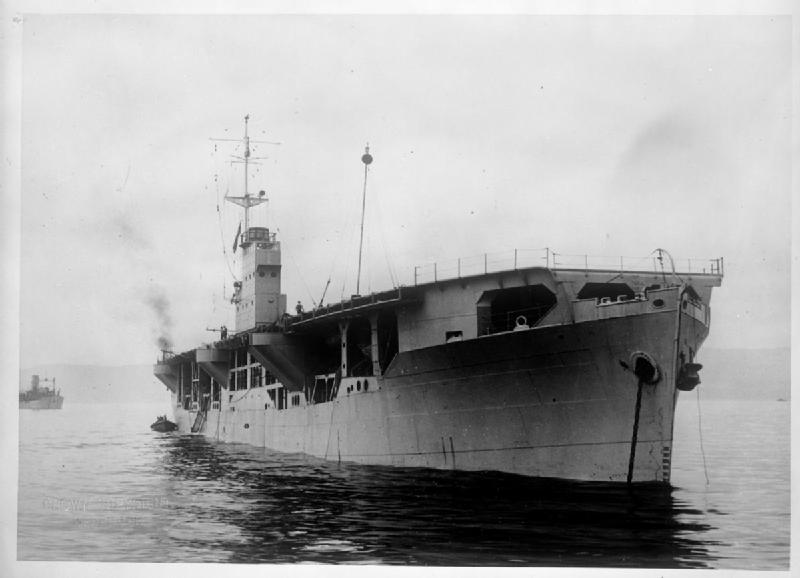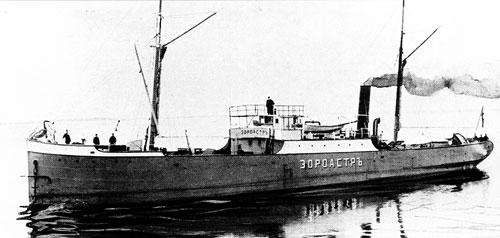|
MV Ancylus
MV ''Ancylus'' was one of nine Anglo Saxon Royal Dutch/Shell oil tankers converted to become a Merchant Aircraft Carrier (MAC ship). The group is collectively known as the ''Rapana'' class. MV ''Ancylus'' was built at Swan Hunter and completed in January, 1935 as an oil tanker for the Anglo Saxon Royal Dutch/Shell line. She was converted to a MAC ship, entering service in October, 1943. As a MAC ship, she had no aircraft hangar, and continued to carry normal cargoes, although operating under Royal Navy control. Only her air crew and the necessary maintenance staff were naval personnel. At the end of the war, ''Ancylus'' was reconverted to an oil tanker, being renamed ''Imbricaria'' in 1952. She served in this capacity until broken up for scrap at La Spezia in December 1954. References {{DEFAULTSORT:Ancylus Oil tankers Ancylus ''Ancylus'' is a genus of very small, freshwater, air-breathing limpets. They are aquatic pulmonate gastropod mollusks in the tribe Ancyl ... [...More Info...] [...Related Items...] OR: [Wikipedia] [Google] [Baidu] |
Royal Dutch Shell
Shell plc is a British multinational oil and gas company headquartered in London, England. Shell is a public limited company with a primary listing on the London Stock Exchange (LSE) and secondary listings on Euronext Amsterdam and the New York Stock Exchange. It is one of the oil and gas "supermajors" and by revenue and profits is consistently one of the largest companies in the world. Measured by both its own emissions, and the emissions of all the fossil fuels it sells, Shell was the ninth-largest corporate producer of greenhouse gas emissions in the period 1988–2015. Shell was formed in 1907 through the merger of Royal Dutch Petroleum Company of the Netherlands and The "Shell" Transport and Trading Company of the United Kingdom. The combined company rapidly became the leading competitor of the American Standard Oil and by 1920 Shell was the largest producer of oil in the world. Shell first entered the chemicals industry in 1929. Shell was one of the " Seven Sisters" whi ... [...More Info...] [...Related Items...] OR: [Wikipedia] [Google] [Baidu] |
Swan Hunter
Swan Hunter, formerly known as Swan Hunter & Wigham Richardson, is a shipbuilding design, engineering, and management company, based in Wallsend, Tyne and Wear, England. At its apex, the company represented the combined forces of three powerful shipbuilding families: Swan, Hunter and Wigham Richardson. The company was responsible for some of the greatest ships of the early 20th century, most famously which held the Blue Riband for the fastest crossing of the Atlantic, and which rescued survivors from . In 2006 ''Swan Hunter'' ceased vessel construction on Tyneside, but continues to provide design engineering services. History Swan & Hunter was founded by George Burton Hunter, who formed a partnership with the widow of Charles Sheridan Swan (the owner of a Wallsend Shipbuilding business established in 1852 by Charles Mitchell) under the name in 1880. In 1903, C.S. Swan & Hunter merged with Wigham Richardson (founded by John Wigham Richardson as Neptune Works in 1860), sp ... [...More Info...] [...Related Items...] OR: [Wikipedia] [Google] [Baidu] |
La Spezia
La Spezia (, or , ; in the local Spezzino dialect) is the capital city of the province of La Spezia and is located at the head of the Gulf of La Spezia in the southern part of the Liguria region of Italy. La Spezia is the second largest city in the Liguria region, after Genoa. Located roughly midway between Genoa and Pisa, on the Ligurian Sea, it is one of the main Italian military and commercial harbours and a major Italian Navy base. A popular seaside resort, it is also a significant railway junction, and is notable for its museums, for the Palio del Golfo rowing race, and for railway and boat links with the Cinque Terre. History La Spezia and its province have been settled since prehistoric times. In ancient Rome, Roman times the most important centre was Luni (Italy), Luni, not far from Sarzana. As the capital of the short-lived Niccolò Fieschi Signoria in the period between 1256 and 1273, La Spezia was inevitably linked with Genoese vicissitudes. After the fall of t ... [...More Info...] [...Related Items...] OR: [Wikipedia] [Google] [Baidu] |
QF 4 Inch Naval Gun Mk IV, XII, XXII
The QF 4-inch gun Mk IVMk IV = Mark 4. Britain used Roman numerals to denote Marks (models) of ordnance until after World War II. This was the fourth model of 4-inch QF naval gun. Variants Mk XII = Mark 12, Mk XXII = Mark 22. was the main gun on most Royal Navy and British Empire destroyers in World War I. It was introduced in 1911 as a faster-loading light gun successor to the BL 4 inch Mk VIII gun. Of the 1,141 produced, 939 were still available in 1939.Campbell, ''Naval Weapons of WWII'', p.59. Mk XII and Mk XXII variants armed many British interwar and World War II submarines. Mk IV gun Mk IV armed many British destroyers and some cruisers in World War I. It was used to arm merchant ships in World War II. The guns armed the following warships : * ''Forward''-class scout cruisers as re-gunned in 1911 * ''Sentinel''-class scout cruisers as re-gunned 1911-1912 * ''Pathfinder''-class scout cruisers as re-gunned 1911-1912 * ''Adventure''-class scout cruisers as re-gunned 19 ... [...More Info...] [...Related Items...] OR: [Wikipedia] [Google] [Baidu] |
Oerlikon 20 Mm Cannon
The Oerlikon 20 mm cannon is a series of autocannons, based on an original German Becker Type M2 20 mm cannon design that appeared very early in World War I. It was widely produced by Oerlikon Contraves and others, with various models employed by both Allied and Axis forces during World War II. Many versions of the cannon are still used today. Blowback-operated models History Origins During World War I, the German industrialist Reinhold Becker developed a 20 mm caliber cannon, known now as the 20 mm Becker using the advanced primer ignition blowback (API blowback) method of operation. This used a 20×70mmRB cartridge and had a cyclic rate of fire of 300 rpm. It was used on a limited scale as an aircraft gun on ''Luftstreitkräfte'' warplanes, and an anti-aircraft gun towards the end of that war. Because the Treaty of Versailles banned further production of such weapons in Germany, the patents and design works were transferred in 1919 to the Swiss firm SEMAG (''Seeba ... [...More Info...] [...Related Items...] OR: [Wikipedia] [Google] [Baidu] |
Fairey Swordfish
The Fairey Swordfish is a biplane torpedo bomber, designed by the Fairey Aviation Company. Originating in the early 1930s, the Swordfish, nicknamed "Stringbag", was principally operated by the Fleet Air Arm of the Royal Navy. It was also used by the Royal Air Force (RAF), as well as several overseas operators, including the Royal Canadian Air Force (RCAF) and the Royal Netherlands Navy. It was initially operated primarily as a fleet attack aircraft. During its later years, the Swordfish was increasingly used as an Anti-submarine warfare, anti-submarine and Trainer (aircraft), training platform. The type was in frontline service throughout the World War II, Second World War. Despite being outmoded by 1939, the Swordfish achieved some spectacular successes during the war. Notable events included sinking one battleship and damaging two others of the ''Regia Marina'' (the Italian navy) during the Battle of Taranto, and the famous attack on the German battleship Bismarck, German b ... [...More Info...] [...Related Items...] OR: [Wikipedia] [Google] [Baidu] |
The Royal Navy During The Second World War A22094
''The'' () is a grammatical article in English, denoting persons or things already mentioned, under discussion, implied or otherwise presumed familiar to listeners, readers, or speakers. It is the definite article in English. ''The'' is the most frequently used word in the English language; studies and analyses of texts have found it to account for seven percent of all printed English-language words. It is derived from gendered articles in Old English which combined in Middle English and now has a single form used with pronouns of any gender. The word can be used with both singular and plural nouns, and with a noun that starts with any letter. This is different from many other languages, which have different forms of the definite article for different genders or numbers. Pronunciation In most dialects, "the" is pronounced as (with the voiced dental fricative followed by a schwa) when followed by a consonant sound, and as (homophone of pronoun ''thee'') when followed by a ... [...More Info...] [...Related Items...] OR: [Wikipedia] [Google] [Baidu] |
Oil Tankers
An oil tanker, also known as a petroleum tanker, is a ship designed for the bulk transport of oil or its products. There are two basic types of oil tankers: crude tankers and product tankers. Crude tankers move large quantities of unrefined crude oil from its point of extraction to refineries. Product tankers, generally much smaller, are designed to move refined products from refineries to points near consuming markets. Oil tankers are often classified by their size as well as their occupation. The size classes range from inland or coastal tankers of a few thousand metric tons of deadweight (DWT) to the mammoth ultra large crude carriers (ULCCs) of . Tankers move approximately of oil every year.UNCTAD 2006, p. 4. Second only to pipelines in terms of efficiency,Huber, 2001: 211. the average cost of transport of crude oil by tanker amounts to only US. Some specialized types of oil tankers have evolved. One of these is the naval replenishment oiler, a tanker which can fuel a m ... [...More Info...] [...Related Items...] OR: [Wikipedia] [Google] [Baidu] |
Merchant Aircraft Carrier
A merchant aircraft carrier (also known as a MAC ship, the Admiralty's official 'short name') was a limited-purpose aircraft carrier operated under British and Dutch civilian registry during World War II. MAC ships were adapted by adding a flight deck to a bulk grain ship or oil tanker enabling it to operate anti-submarine aircraft in support of Allied convoys during the Battle of the Atlantic. Despite their quasi-military function, MAC ships retained their mercantile status, continued to carry cargo and operated under civilian command. MAC ships entered service from May 1943 when they began to supplement and supplant escort carriers, and remained operational until the end of the war in Europe. Development In 1940, Captain M. S. Slattery RN, Director of Air Material at the Admiralty, proposed a scheme for converting merchant ships into aircraft carriers as a follow-up to the CAM ship project. Slattery proposed fitting a flight deck equipped with two arrester wires and a safe ... [...More Info...] [...Related Items...] OR: [Wikipedia] [Google] [Baidu] |
Oil Tankers
An oil tanker, also known as a petroleum tanker, is a ship designed for the bulk transport of oil or its products. There are two basic types of oil tankers: crude tankers and product tankers. Crude tankers move large quantities of unrefined crude oil from its point of extraction to refineries. Product tankers, generally much smaller, are designed to move refined products from refineries to points near consuming markets. Oil tankers are often classified by their size as well as their occupation. The size classes range from inland or coastal tankers of a few thousand metric tons of deadweight (DWT) to the mammoth ultra large crude carriers (ULCCs) of . Tankers move approximately of oil every year.UNCTAD 2006, p. 4. Second only to pipelines in terms of efficiency,Huber, 2001: 211. the average cost of transport of crude oil by tanker amounts to only US. Some specialized types of oil tankers have evolved. One of these is the naval replenishment oiler, a tanker which can fuel a m ... [...More Info...] [...Related Items...] OR: [Wikipedia] [Google] [Baidu] |






.png)


